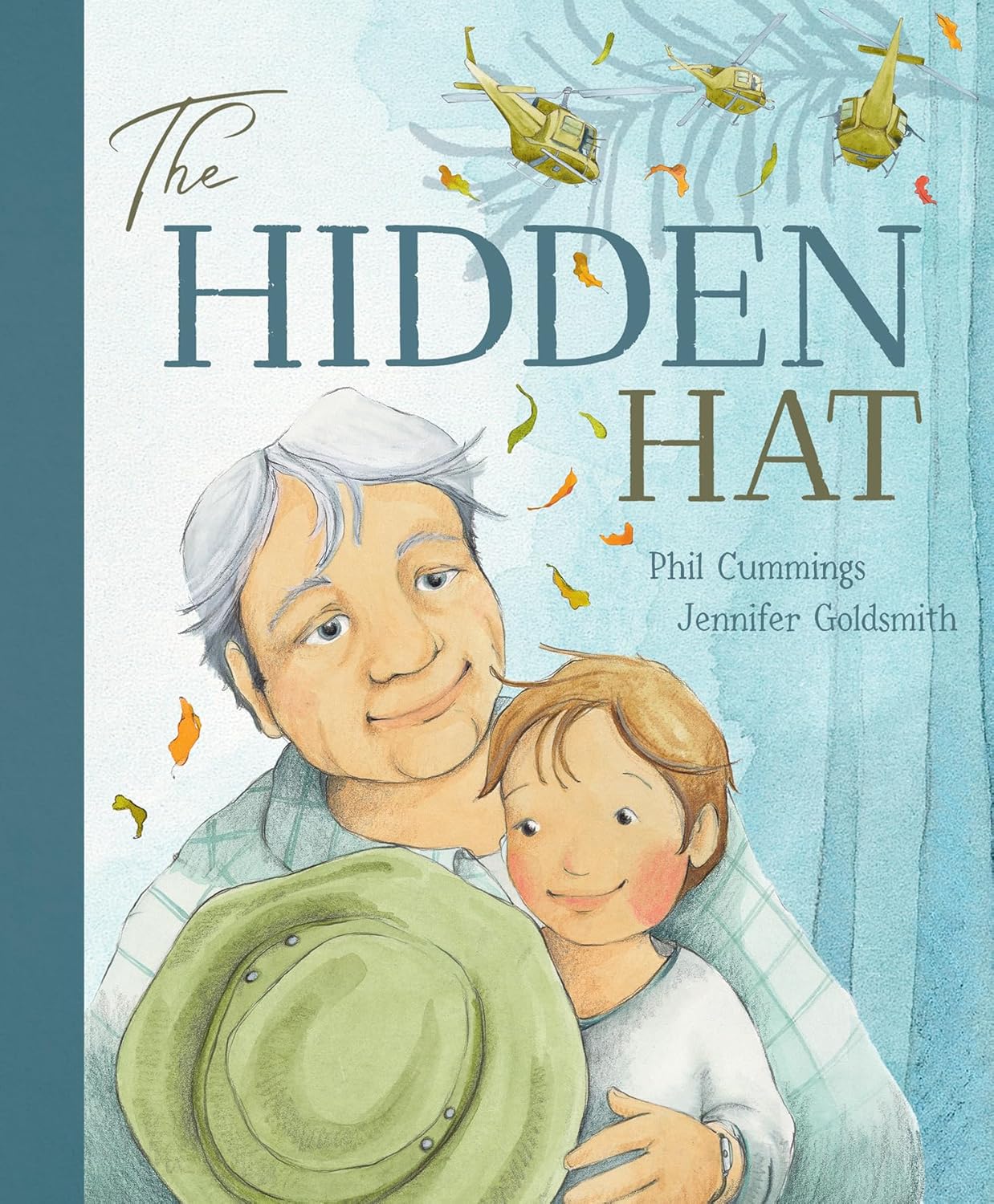The hidden hat by Phil Cummings. Illus. by Jennifer Goldsmith

How do you write a picture book about war that exposes young children to the unknown stories of their grandparents’ lives, gives information that can be easily absorbed and at the same time provide a rush of pride in the ceremony of Anzac Day. Phil Cummings has shown that he is a master of this genre, with Anzac biscuits (2013) and Ride, Ricardo, ride (2015) showcasing children touched by war in widely different circumstances.
And this book strengthens his reputation, using an old man’s hat to unlock memories that have lain dormant. Just as in Newspaper hats (2015) where a hat helps recall memories in a nursing home, this one enables the grandfather to recall things that he was part of sixty years ago.
Hiding in Grandpa’s wardrobe, Mitch finds an old hat. Tumbling out of the wardrobe parallels the grandfather, now pictured as a young man, hiding in the jungles in Vietnam, and from this page on the words and actions of the children on one side of the page complement the actions of the soldiers on the facing page.
This way of showing the war and Grandpa’s involvement, gives it a more personal feel for young readers, while the illustrations by Jennifer Goldsmith are amazingly detailed in their imagery of the man’s farm and his time in war.
Showing their find to Grandpa, unlocks memories of his time in Vietnam: going on patrol, walking carefully through the jungle, helping his mates, waiting for a chopper, losing his hat, looking down from the chopper at the jungle below.
The watercolour illustrations bring the children and their grandfather to life. Smiles radiate from the faces, arms hold the children to the old man's chest as he remembers his youth glancing back over his shoulder at the choppers in the sky.
The movement achieved with the watercolour medium is spectacular. The wind whips up the leaves on the farm, swirling around the children’s feet, while in Vietnam, the choppers cause mayhem as the men's clothes and foliage are picked up as the blades rotate. The soft images of the old man and the children are admirable, and bear closer inspection, particularly on the second last double page of the story which shows the march along the main street, Grandfather with his old mates, his family (watch out for the dog) looking on.
Over the page can be seen a meal with the family and an outline of facts about the Australian soldiers’ hats.
This is a most satisfying picture book about war. It begins and ends with the family, the children now more aware of their Grandfather’s time in Vietnam, he supported by his old friends and the stories they share together.
Themes: War, Vietnam War, Families, Grandchildren and grandparents, Memory, Anzac Day.
Fran Knight